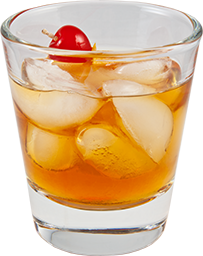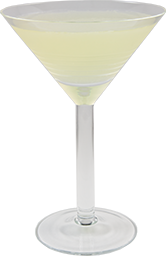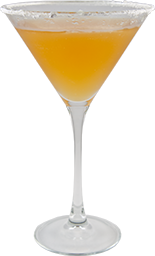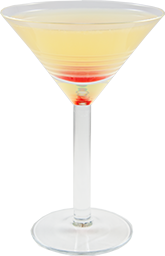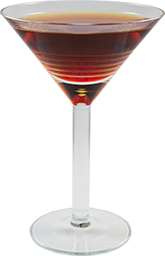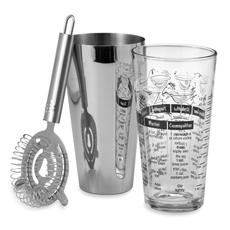Getting started in cocktails may seem like a daunting prospect. Your average chain restaurant that may have four or five beers on tap, and a similar number of wines by the glass, likely has a dizzying array of liquors and associated bar accoutrements. Strange rituals abound, and you’ll be solemnly admonished to always do something by one source, then told to do the opposite by another equally credible source. Similarly, many books and websites suggest a “basic bar” that might contain a couple hundred dollars worth of spirits, an expensive proposition if you’re not sure this is a hobby you’re interested in continuing. If you’re unsure whether cocktails are a hobby worth pursuing, take a moment to read the Cocktail Hound Manifesto.
The Myth of the “Starter Bar”
You’ll find much of the advice here on Cocktail Hound suggests getting back to basics, and focusing on enjoying cocktails rather than fretting over technique, and getting started is no exception. Rather than scouring the web for the perfect “starter bar” list, and rushing to the nearest liquor store with cash in hand, identify one or a two cocktails that you enjoy to get you started. In my case, this was a single cocktail, the Manhattan. There’s no shame in starting your cocktail journey with a single drink, whether it’s something simple like a Cuba Libre, or a more complex drink. If I may offer a suggestion, I’d lean towards a more classic cocktail rather than a “mixed drink”, the former traditionally consisting of two or more liquors while the latter usually hides the spirit behind a mixer like juice or soda. If you’re concerned with the strength of drink (in terms of alcoholic content or taste) simply serve the cocktail “on the rocks” (over ice) rather than “neat” (straight up, without ice) and allow for some melting to dilute the spirits without altering their taste.
Selecting Spirits
Some of the easily made “classics” include the Martini, Manhattan, Old Fashioned, Tom Collins, Margarita, and the Sidecar. Try a few in your favorite bar, realizing that they may or may not be made with any particular care (the Sidecar is especially risky). Armed with a drink or two you’re interested in exploring further, find a recipe and build a shopping list. In the case of the classics mentioned above, most require no more than three or four ingredients and all have recipes here on Cocktail Hound. You’ll find more information about selecting spirits in our knowledge archive, along with some recommendations, but there’s no problem with starting with a mainstream brand that works for your budget, and is locally available. Once you start developing your tastes and technique, then you can experiment with different spirits.
Tools of the Trade
Glassware, shakers, and other tools of the trade can seem intimidating, with hundreds of styles of glassware available, and dozens of variations of the standard cocktail glass (often referred to by the uninitiated as a “martini glass”). During your first foray into cocktails you need not obsess about glassware beyond buying a glass or two that appeals to you, should you be interested in aesthetics right off the bat. Personally, I’ll take a lovingly crafted cocktail in a plastic cup every time over a sloppily-made disaster in a beautiful glass.
Cocktail shakers also need not be mysterious, as their sole purpose is to cool and mix a drink by shaking it with ice. The most basic incarnation is commonly referred to as a “Boston Shaker”, and consists of a metal glass with a wide mouth that fits over a standard pint glass, and is usually combined with a strainer that fits over the glass and prevents any ice from entering the cocktail glass when it is emptied. A traditional shaker is also a simple affair, with a metal vessel, lid with strainer, and cap, essentially combining the three parts of the Boston Shaker into a single unit. You’ll likely end up with several so don’t worry that the first shaker you buy will be your last, and you can usually find a range of shakers at your local liquor store, or at a department or glassware store. I personally prefer the standard shaker, although the Boston Shaker is easier to clean and less likely to have parts get stuck together (and is usually less expensive since you only need the metal vessel and strainer, assuming you already have a pint glass on hand). A traditional shaker is easier to handle one-handed, and for many is what they picture when they think “cocktail night”.
Perhaps the most important and easily overlooked tool is plain and simple ice. If you have an ice maker in your freezer, I highly recommend emptying the old ice in advance of a cocktail session, and using fresh ice when making your drinks. Ice made in the freezer can quickly absorb food odors, and grow “stale”, corrupting the flavor of your cocktails and even ruining the taste of expensive spirits, especially troubling as ice is usually the cheapest ingredient in your cocktail. There are other tools you can add as you expand to other drinks, but initially, a shaker and ice are all you’ll need.




